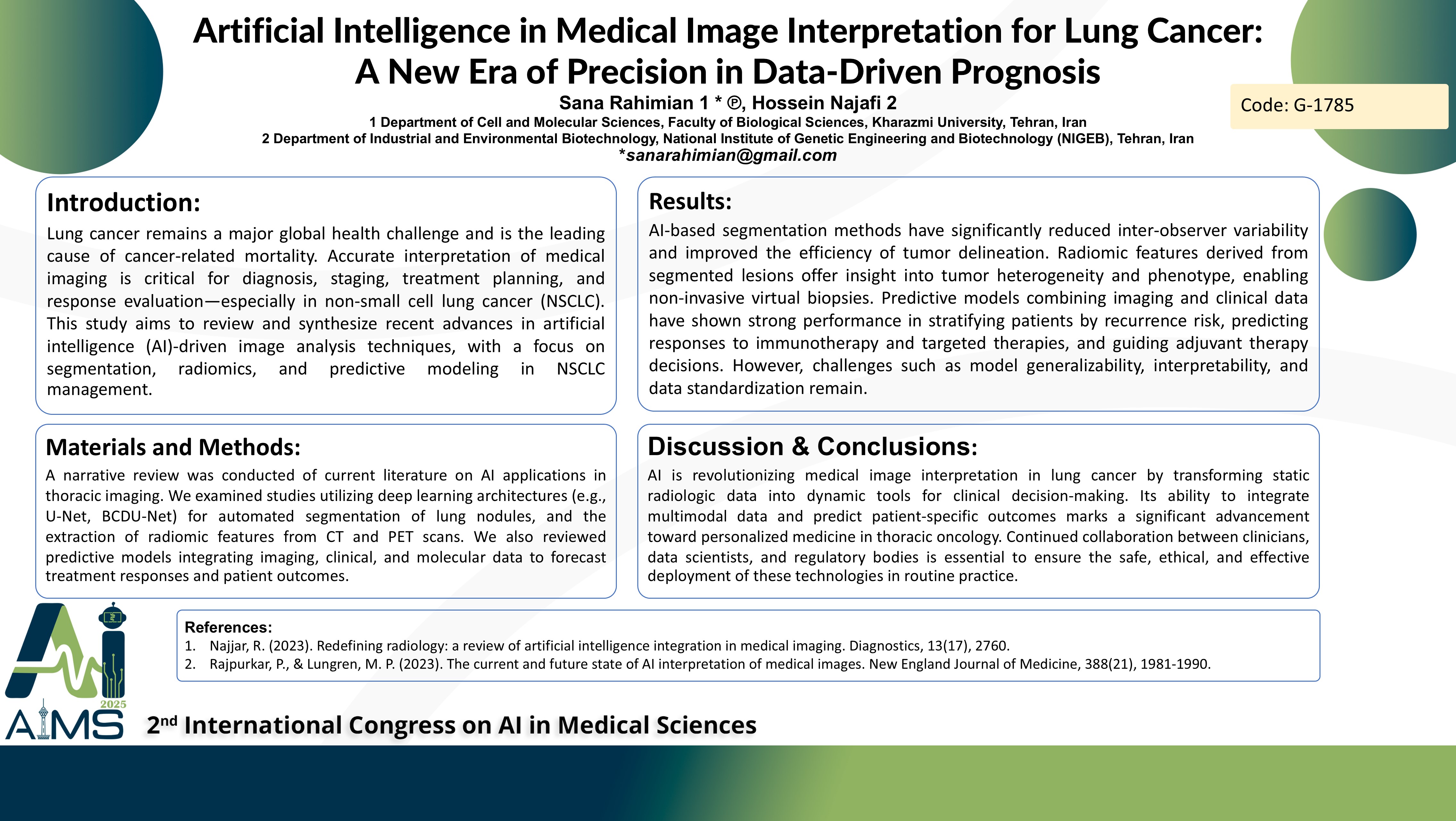Artificial Intelligence in Medical Image Interpretation for Lung Cancer: A New Era of Precision in Data-Driven Prognosis
Code: G-1785
Authors: Sana Rahimian * ℗, Hossein Najafi
Schedule: Not Scheduled!
Tag: Biomedical Signal Processing
Download: Download Poster
Abstract:
Abstract
Background and Aims: Lung cancer remains a major global health challenge and is the leading cause of cancer-related mortality. Accurate interpretation of medical imaging is critical for diagnosis, staging, treatment planning, and response evaluation—especially in non-small cell lung cancer (NSCLC). This study aims to review and synthesize recent advances in artificial intelligence (AI)-driven image analysis techniques, with a focus on segmentation, radiomics, and predictive modeling in NSCLC management. Methods: A narrative review was conducted of current literature on AI applications in thoracic imaging. We examined studies utilizing deep learning architectures (e.g., U-Net, BCDU-Net) for automated segmentation of lung nodules, and the extraction of radiomic features from CT and PET scans. We also reviewed predictive models integrating imaging, clinical, and molecular data to forecast treatment responses and patient outcomes. Results: AI-based segmentation methods have significantly reduced inter-observer variability and improved the efficiency of tumor delineation. Radiomic features derived from segmented lesions offer insight into tumor heterogeneity and phenotype, enabling non-invasive virtual biopsies. Predictive models combining imaging and clinical data have shown strong performance in stratifying patients by recurrence risk, predicting responses to immunotherapy and targeted therapies, and guiding adjuvant therapy decisions. However, challenges such as model generalizability, interpretability, and data standardization remain. Conclusion: AI is revolutionizing medical image interpretation in lung cancer by transforming static radiologic data into dynamic tools for clinical decision-making. Its ability to integrate multimodal data and predict patient-specific outcomes marks a significant advancement toward personalized medicine in thoracic oncology. Continued collaboration between clinicians, data scientists, and regulatory bodies is essential to ensure the safe, ethical, and effective deployment of these technologies in routine practice.
Keywords
Artificial Intelligence, Lung Cancer, Medical Imaging
